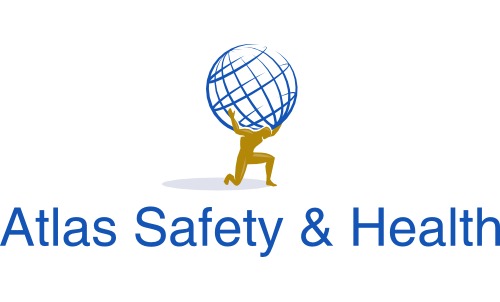Developing a Robust Safety Culture
Developing a Robust Safety Culture
From management involvement to personnel training, several steps are necessary to create and
maintain a safe work environment.
By Harry Xanthakos, CEO, Atlas Safety & Health, LLC
For many safety professionals, safety culture is a system that consists of attitudes, beliefs, values and principles that encourage safe behavior in the workplace. All of the moving parts need to come together to maintain this system.
In a manufacturing company, maintaining a safety culture and system entails several elements, including management and employee involvement, hazard analysis, control and abatement, communication and training, and evaluation. Each of these steps is necessary to create and promote a safe work environment.
Management Involvement
Management involvement is the pillar of a successful and effective safety culture. Management must set the example for employees regarding occupational safety and health. This includes practicing safe behaviors and demonstrating involvement by doing things like spending time in teams and empowering workers to create safety procedures and policies for the organization. Management can also serve as role models in a safety system by allocating resources, such as personnel and money, to improve the safety of employees at the manufacturing site.

Employee Engagement
A successful safety culture in an organization cannot exist without the participation of its employees. Employees become owners of the safety culture when they participate in the occupational safety and health initiatives of their organization. These initiatives are pivotal in establishing a culture, and their objectives should include raising the employees’ awareness on existing hazards, promoting employee engagement, making the work processes more efficient, and reducing the number of incidents in the workplace.
There are several ways to engage employees with a safety culture. For example, one method is to involve them in the development of new training courses (e.g., on the use of respirators or other safety equipment), a second method is to have them participate in safety committees and contribute in the decision making, and a third method is to include them in safety orientations to describe the hazards they have encountered in the worksite and their near miss experiences.
Analyzing Hazards
Before instigating any safety initiative, a worksite hazard analysis is essential. Management must identify current and future threats in the workplace, including those from falls, fire, electrical issues, and potential machine entanglement. Analysis takes place at the largest and smallest of levels, breaking down every process into specific components. It then identifies the health and safety hazards of each component. If health and safety hazards are not identified and analyzed, it is not possible to protect employees or create a secure worksite.
Control and Abatement
The next step in maintaining a safe culture is hazard control and abatement. Management, with the assistance of safety professionals, should attempt to eliminate the hazards identified during the analysis phase. They might consider substitution, in which one hazardous material is replaced with another, safer material (e.g., lead in electronics is substituted by an alloy that contains tin, silver and copper). Additional potential methods include engineering controls, such as enclosing or isolating a hazardous process (e.g., X-ray machine), or changing the initial design of a machine.
If management finds that certain hazards can’t be eliminated, the next step is to use work practice controls to reduce them. Potential control strategies include employee breaks, job rotation (i.e., workers change tasks every six months), changing the process, altering the production rate, focusing on personal hygiene, health monitoring, proper housekeeping, machine maintenance, and training. The last step of the hazard control and abatement process is the use of personal protective equipment such as safety glasses, respirators, and gloves.
Communication and Training
Employers must provide employees with information about existing and anticipated hazards in the workplace. This information should include the organization’s policies and procedures, regulations, and safety objectives. Examples of effective communication methods include orientation manuals, task and procedure instructions, general safety courses, equipment manuals, signage, and safety meetings. Communication with employees is vital; it creates safety awareness while reinforcing safe behaviors and demonstrating that management is committed to the wellbeing of its employees.
Employers must also provide employees with the appropriate training before they assign a certain task. Task-specific training enables workers to recognize hazards and teaches them ways to eliminate or abate those threats. Safety training can be achieved through various methods, including lectures in a classroom environment, e-learning, hands-on training, safety meetings, and equipment simulators. Training should be provided every time an employee is introduced to a new task or is found to be working in an unsafe manner.
Evaluation
The final element in a safety culture is the evaluation of performance, along with a reward system. Manufacturers should first identify the minimum requirements for a safe and healthy workplace at their facility. Performance should then be measured—usually every year (at the beginning of a period and at the end of the period)—to track the organization’s actual performance against the identified minimum required targets.

Going through this process enables manufacturers to identify weaknesses and evaluate the effectiveness of previously implemented policies and procedures. As with any evaluation, the goal is to see change and improvement to the organization’s safety culture.
This performance evaluation method should be complemented with a reward system that provides employees with feedback regarding their performance. The reward system should particularly recognize those who practice and promote safe behavior in their workplace.
Evolving Commitment
Safety culture is something that evolves with industrial technology and innovation. The safety culture of an organization will be influenced and altered by the beliefs of new management, implementation of new safety regulations, introduction of innovative materials and equipment, and medical findings that identify previously unknown hazards in manufacturing (e.g., vibration). However, carefully developing and maintaining a safety culture can keep a workplace free of hazards, creating a safe and secure environment for all employers and employees.
For more information, contact the author at (917) 562-6396 or harryx@atlassafetyhealth.com, or visit www.atlassafetyhealth.com.
